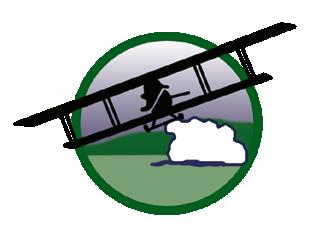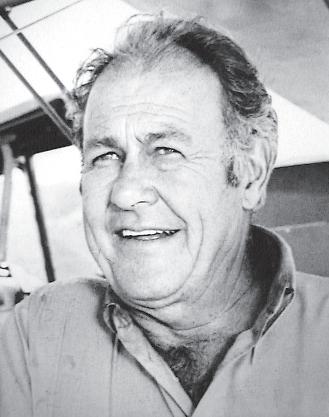
4 minute read
Jack Colley - Father of the Colley Super Stearman
NAAHOF INDUCTEE SPOTLIGHT
John W. (Jack) Colley Clarkston, Washington. Inducted —1993
Active in aerial application from 1950-1987 in Washington, Montana, New Mexico, Texas, Louisiana and Central America, and fire control in Idaho. Modified and rebuilt Stearman aircraft (Colley Super Stearman) and sport aircraft. Member of several state agricultural aviation associations.
Born May 23, 1923, Jack Colley grew up and attended school in Edmonds, Washington, playing the clarinet in the school band, basketball, football and baseball. He had a paper route and raised homing pigeons; two major interest, airplanes and motorcycles.
In Jack’s senior year of high school he left to join the National Guard, completing a one year military obligation. He attended night school to graduate from high school. After war was declared in December of 1941, Jack was called to duty, applying for Aviation Cadet training in early 1942. The program had him in preflight in Montgomery, Alabama, primary in Americus, Georgia, basic in Newberg, New York, graduating from pilot training at Turner Field in Albany, Georgia. He was commissioned as a 2nd Lieutenant and became a flight instructor at Turner Field training French students in B-25s for the remainder of the war, attaining the rank of Captain in 1945.
After the war, Jack returned to Seattle and started a motorcycle delivery business. He joined Cossack’s Motorcycle Stunt and Drill Team, winning the Pacific Northwest Championship in 1947, a successful motorcycle racing career.
Jack began crop dusting in 1950, treating wheat with a Stearman in eastern Washington and Montana. He later began dusting cotton in New Mexico and Texas during the summer and fall. In 1953 he had went to Central America to spray cotton, which began in September and ended in late December. By 1953 he developed a schedule that had him flying over wheat in the Pacific Northwest, cotton in Louisiana and cotton in Nicaragua, ten months out of the year.

Jack Colley
Jack survived three serious crop dusting accidents, totally destroying each Stearman with no serious injuries. In 1952 the engine failed in southern Idaho and 1956 Nicaragua with yet another engine failure that had the Stearman go through the top of a house at the end of the strip. Then, in 1976 he was caught in a downdraft in Nezperce, Idaho where the aircraft burned.
From 1960-1965 Jack worked fire control for the forestry service at Grangeville, Idaho. In 1974 he furnished the aircraft and did the stunt flying for the movie “Whiff’s”, filmed near Salt Lake City, Utah.
Beginning in 1960, Jack operated Colley Aviation out of Nezperce, Idaho building the Colley Super Stearman. The company built a total of 26 highly modified Stearman aircraft.
Involved in the rebuild for the model AG 75, the fuselage was completely dismantled, sandblasted, inspected and internally treated with linseed oil and refinished with epoxy paint. It was modified to accommodate a molded 300-gallon fiberglass hopper with a Transland gate box, Simplex spray system and 2-inch bottom loading system. The hopper loading door was operated by a cockpit control lever.
A molded fiberglass fuselage cover was installed incorporating four large access doors with a fully enclosed canopy having exit doors and good all-around visibility. The tail trunion was modified to elevate the tail six inches, improving ground visibility while maintaining stable ground handling. The fuselage was assembled with all new hardware including bearings, pulleys and cables.
A 600 hp P&W R-1340 engine and Hamilton Standard 12D40 propeller were installed with fresh overhauls. A 12-volt electrical system and 27-inch wheels and an automobile brake system were installed.
The wing panels were extended and squared for high performance fiberglass wingtips, which greatly improved flight stability and the spray pattern. Eighteen-gallon reserve fuel tanks were added to each upper wing, giving the Super Stearman a total of 80 gallons of fuel capacity.
Ailerons were installed in the upper wings making four, equal size and balanced ailerons with servo boosters for improved control.
Further work to the airframe had all the wood inspected and refinished with spar varnish. The tail sections were sandblasted, internally treated with linseed oil and refinished in epoxy paint, like the fuselage. All wing, center section and tail surfaces were recovered with long life (at that time) Dacron fabric. All fabric surfaces were finished in orange and yellow, with the fuselage in a deep blue with a yellow trim stripe.
The empty weight of Jack Colley’s Super Stearman was certified at 3,300 pounds with a gross weight of 5,200 pounds. The wing span was 36 feet, length 26 feet and height 11.5 feet. It was a striking aircraft, built and designed upon the many years of Stearman flying experience Jack Colley obtained throughout his career.
Along with Jack designing the Colley Super Stearman, he belonged to many state ag aviation associations, as well as the national association. Even after 37 years in the ag aviation industry and into his retirement, he maintained his memberships in the organizations, serving as vicepresident of the Idaho Aviation Trades Association, president of the Idaho AAA and a board member for the IDAAA, PNWAAA, and the NAAA. Jack Colley, father of the Colley Super Stearman.
NAAHOF Inductees is a series of articles featuring the inductees to the National Agricultural Aviation Museum’s Hall of Fame. Although some of the information is limited, including in some cases unknown induction years, it is the best compilation available from The National Agricultural Aviation Museum, the NAAHOF Nominations Board of Directors, the NAA Museum Board of Directors and Mabry Anderson’s book, Low and Slow.
Each month AgAir Update will feature one or more individuals honored in the National Agricultural Aviation’s Hall of Fame, how many depending on the information available about the individual. Enjoy reading about the history and the history makers of ag aviation:








